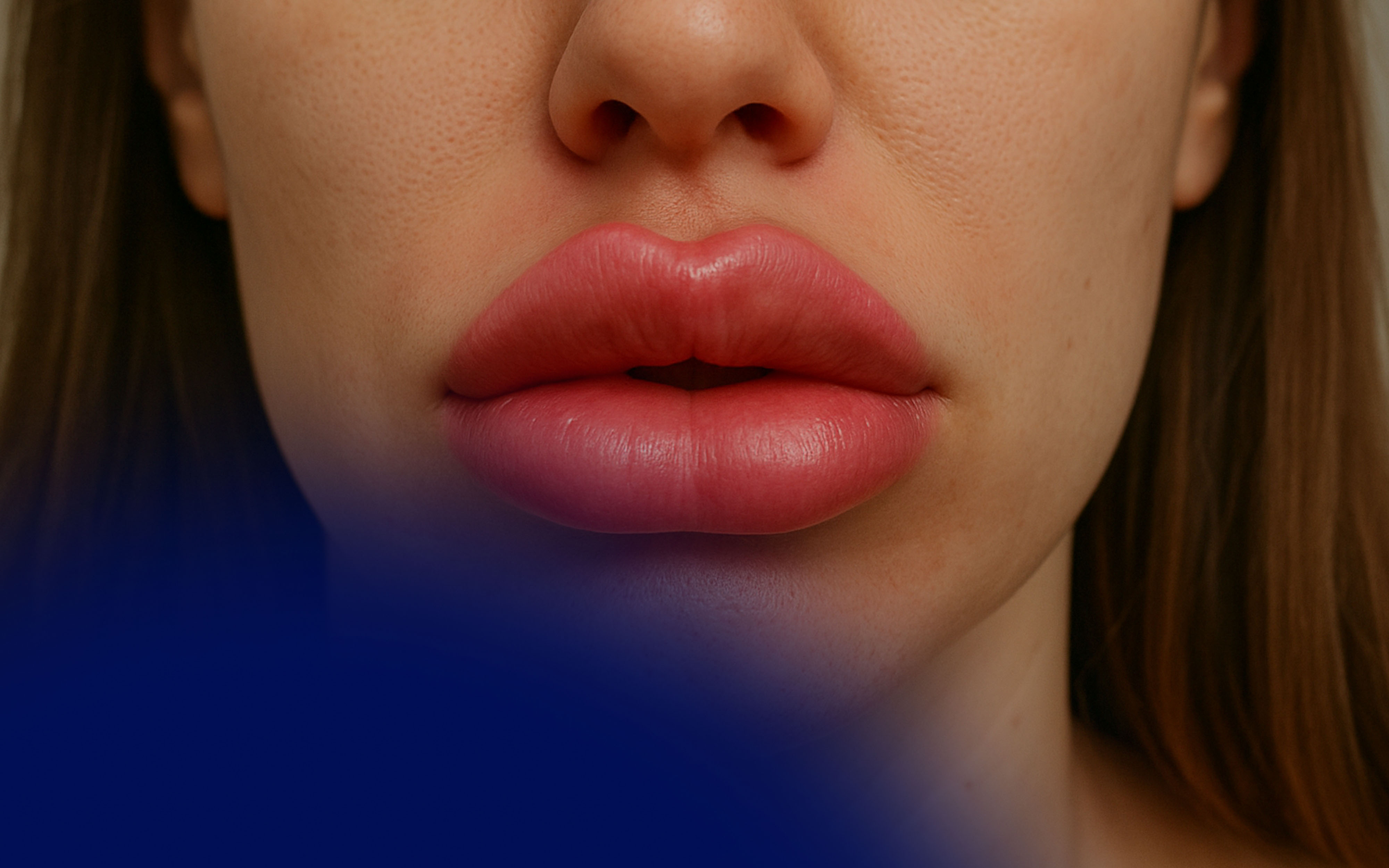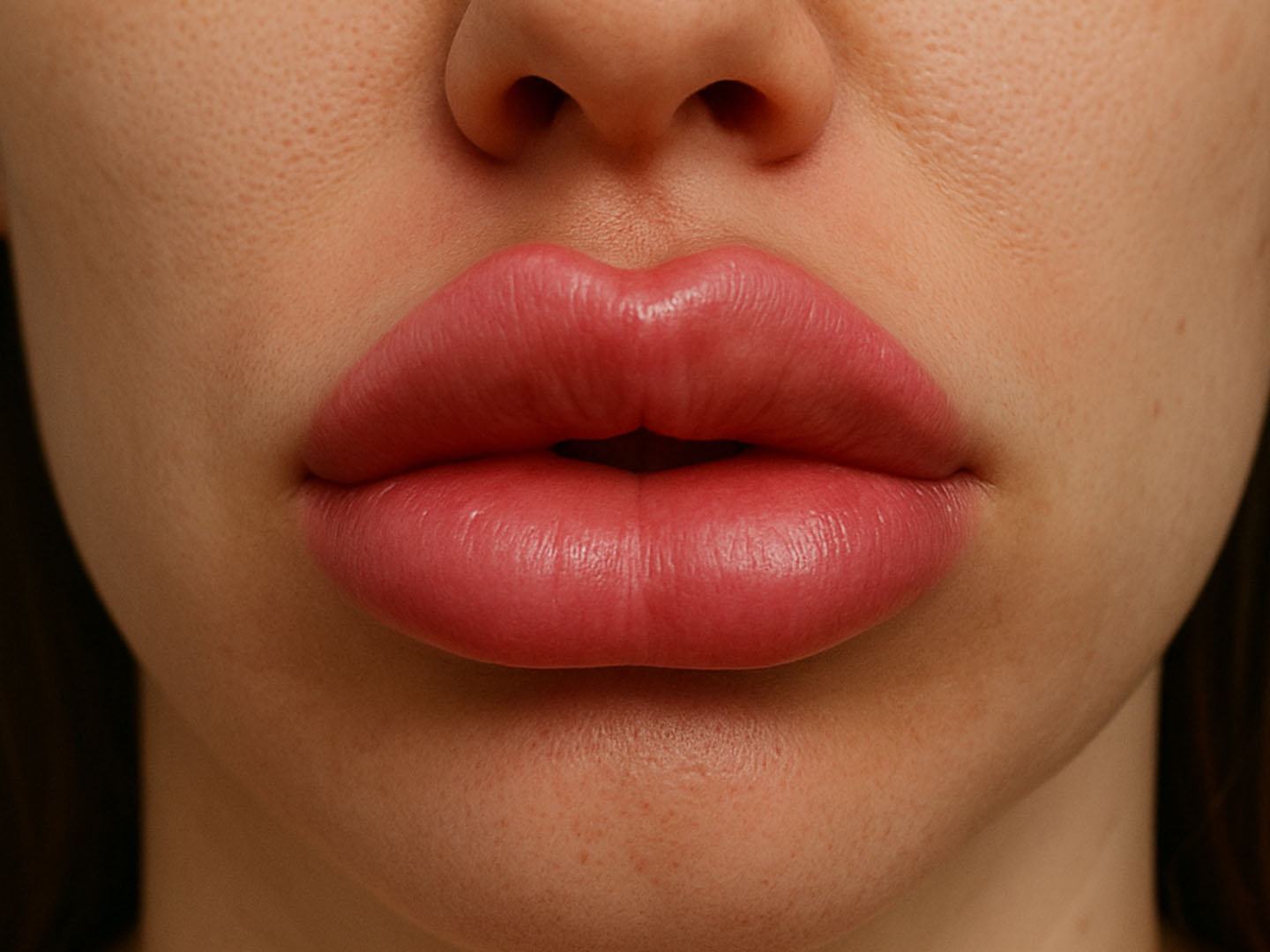
Lip augmentation is one of the most popular injectable procedures in aesthetic medicine, but not every result meets expectations. Whether due to poor technique, product choice, or anatomical oversight, bad lip filler outcomes can be both aesthetically disappointing and medically concerning. For medical aestheticians, knowing how to identify, treat, and prevent lip filler complications is essential for patient safety and satisfaction.
This guide explores what qualifies as a “bad” result, signs to look for, correction strategies like hyaluronidase for lips, and how to communicate with patients during a filler gone wrong scenario.

What Does Bad Lip Filler Look Like?
The term “bad” lip filler can refer to either a poor aesthetic outcome or a medical complication. Some issues are minor and cosmetic, while others require urgent clinical attention. Recognizing the difference early is key to managing patient outcomes.
Aesthetic Failures
- Overfilling ("duck lips" or “sausage lips”)
- Asymmetry between the left and right sides
- Lumps or nodules
- Unnatural stiffness or firmness
- Bad lip filler migration above or below the vermilion border
- Distorted shape or poorly defined borders
Clinical Complications
- Vascular compromise (e.g., blanching, severe pain, tissue necrosis)
- Infection (redness, swelling, heat, pus)
- Allergic reaction (rare but includes swelling, itching, rash)
It’s also important to distinguish between normal, temporary swelling post-injection and actual complications. Swelling and mild bruising are common within the first 48 hours. However, if symptoms persist or worsen, further evaluation is warranted. Patient education around healing stages helps set expectations and avoid unnecessary alarm.
More serious conditions like vascular occlusion require rapid recognition. Practitioners should be familiar with signs such as blanching, pain, coolness, and mottling, and know how to respond quickly.
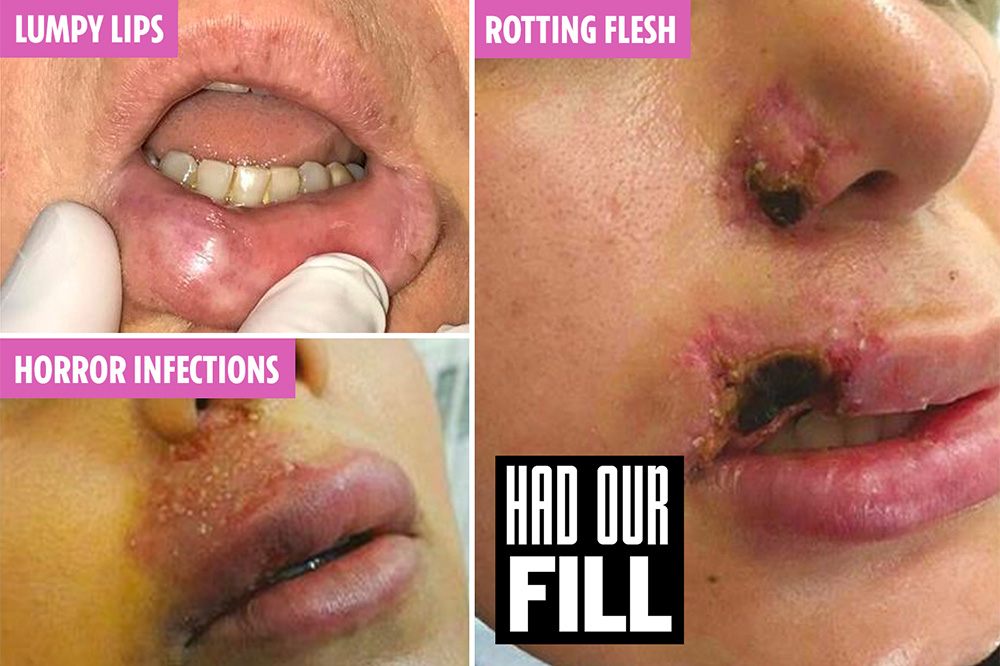
Common Causes of Poor Lip Filler Results
How common is it for lip fillers to go wrong? While most treatments are successful, complications or poor outcomes can occur, especially when technique or planning is lacking.
Technical Errors
- Overcorrection or excessive volume
- Superficial injection leading to lumpiness
- Wrong angle or poor depth control
- Inappropriate product selection (too thick or hydrophilic for lip tissue)
Anatomical Oversights
- Ignoring lip symmetry, vermilion border, or philtrum structure
- Failing to assess the dynamic movement of the lips when speaking or smiling
Incomplete Patient History
- Injecting over previous filler without full disclosure or documentation
- Unawareness of existing product type, location, or complications
Inexperience often contributes to unnatural outcomes. For example, a rigid filler placed too superficially can lead to persistent lumps or visible ridges. Using a product not designed for the lips can cause uneven distribution or long-term nodules. Lip filler lumps months later are often traced back to improper technique or product choice.

How to Correct Lip Filler Complications
Knowing how to fix lip filler gone wrong is an essential skill for all aesthetic practitioners.
Hyaluronidase Protocol
When treating HA-based filler issues, hyaluronidase for lips is the gold standard for reversal. Key points to consider:
- Dosage: Depends on the volume and type of filler; 10–30 units per area is common
- Dilution: Use saline or bacteriostatic water
- Technique: Inject intradermally or subcutaneously, depending on the location
- Patch test: Consider for allergy-prone patients, though rare
Early intervention is important. In cases of vascular compromise, act immediately. For aesthetic corrections, it’s often better to wait 1–2 weeks for swelling to subside before reassessing.
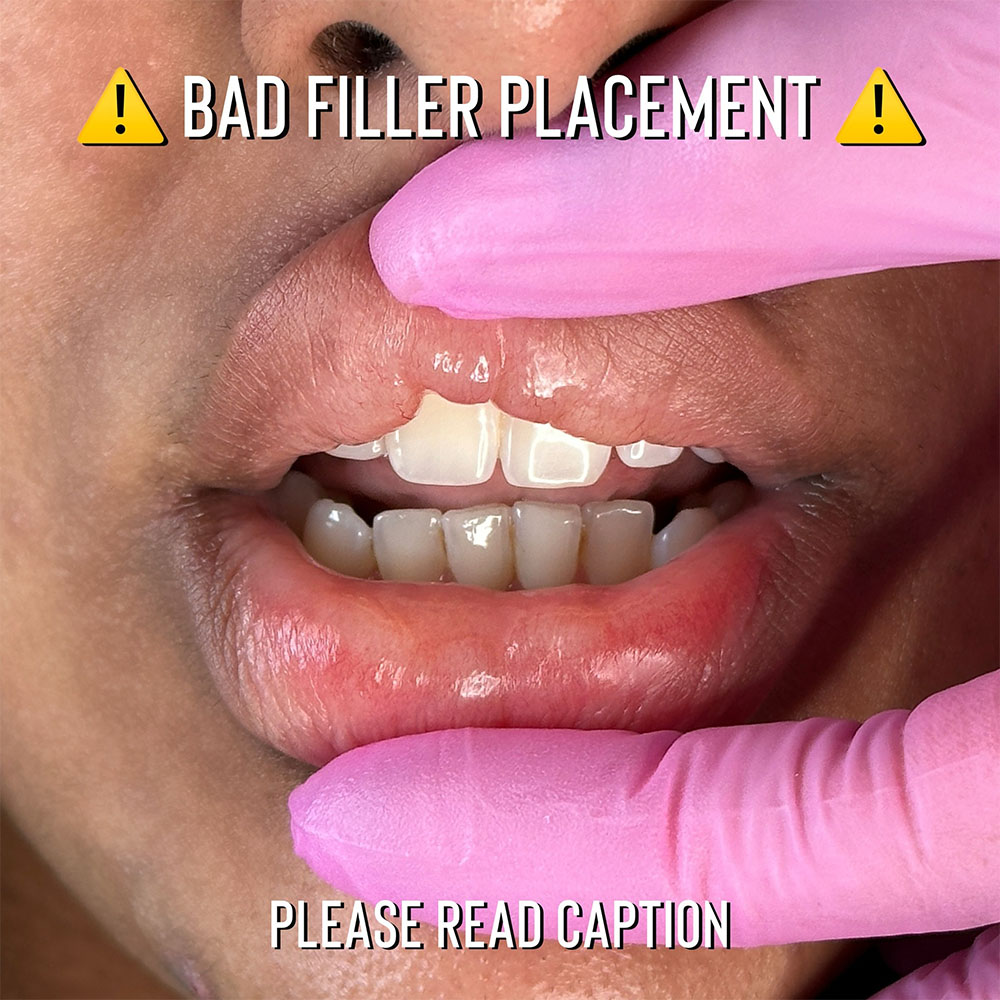
Manual Correction
In very early cases, massage can help redistribute product or soften minor irregularities. However, this is only effective within hours of injection and when no medical complications are present.
Specialist Referral
If vascular issues or persistent nodules are present, refer the patient to an experienced injector or vascular specialist. Delayed reactions may require imaging or biopsy to rule out granulomas or biofilms.
Patient Reassurance
A patient who has experienced a lip filler gone wrong scenario is often anxious. Be transparent, professional, and reassuring. Explain the steps to resolution and what outcomes to expect. Avoid blame and instead focus on safe and effective correction.

Prevention: Avoiding Bad Lip Filler Outcomes
Many cases of bad lip filler can be prevented through proper planning, product selection, and communication.

Key Tips for Prevention
- Use small volumes and build up gradually
- Select products specifically made for lips (e.g., Juvederm Volbella, Restylane Kysse)
- Focus on lip shape, symmetry, and definition rather than volume alone
- Respect lip anatomy and dynamic movement
- Always document baseline photos, the product used, injection sites, and amounts
Investing in continuous lip filler training is critical. HubMed Ed offers dedicated lip enhancement training as well as a wide variety of different courses that can help you improve your skills.
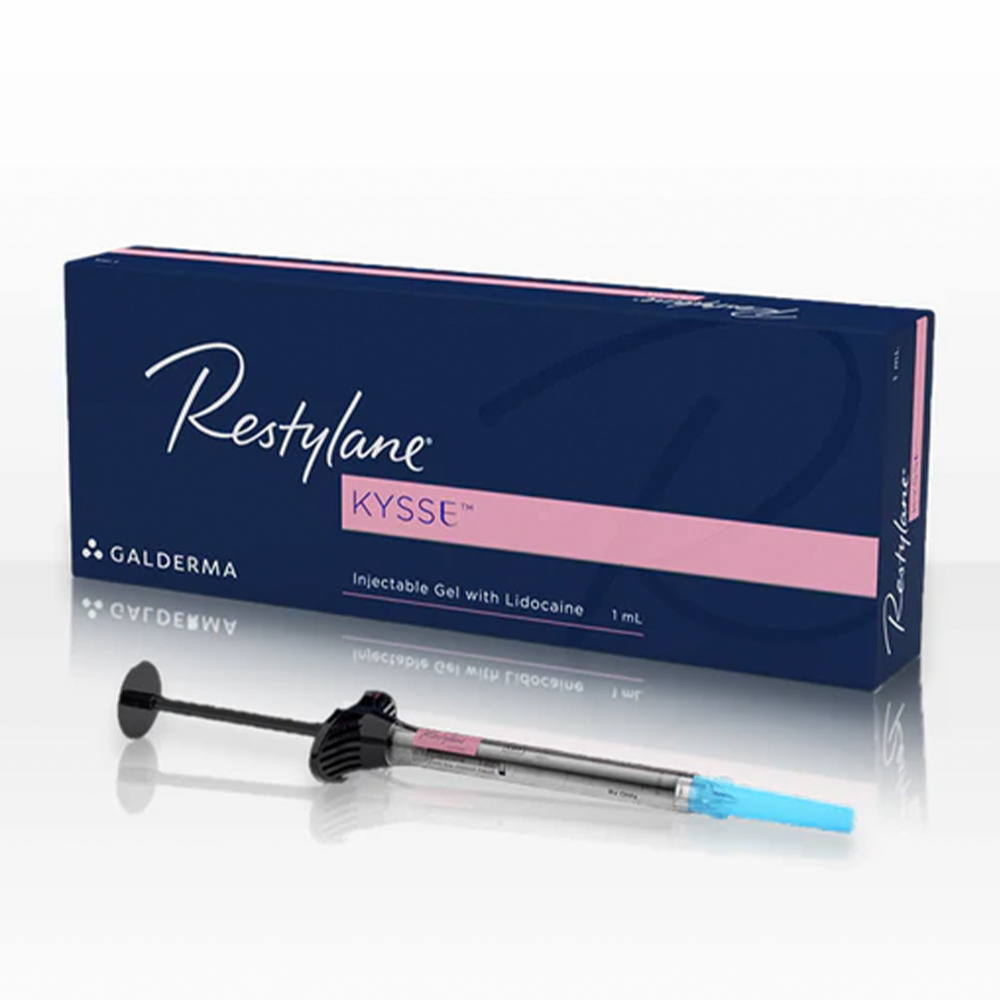
What To Do Before Lip Filler Procedure
Patients should understand that while lip fillers can improve shape and volume, perfection isn’t the goal; balance and natural movement are. Reinforce that mild asymmetry, swelling, and bruising are normal and part of the healing process. It's also important to explain that full results may take up to two weeks to settle.
Use this time to go over the patient’s filler history, allergies, and any previous issues. If they’ve had bad results in the past, address those concerns openly. Providing pre-treatment photos helps manage expectations and gives you a baseline for post-treatment comparisons.

Lip Filler Procedure Aftercare
Aftercare doesn’t end when the patient leaves the clinic. Give them written and verbal instructions that clearly outline:
- What to expect in the first 72 hours (e.g., swelling, bruising, tenderness)
- What’s normal and what requires medical review
- Signs of potential complications like blanching, excessive swelling, or persistent pain
- When to schedule a follow-up visit
Encourage patients to avoid touching or massaging the area unless advised, and to refrain from heat exposure, strenuous activity, or alcohol for 24–48 hours.
It's also helpful to remind patients of the healing stages and provide visual examples, so they don’t panic over expected side effects. Linking to reliable educational content, such as HubMed Ed’s post on lip filler bruising, reinforces your guidance and gives them a trusted source to refer back to.

Follow-Up and Ongoing Communication
A follow-up appointment within 10–14 days allows you to evaluate the results, address concerns, and make adjustments if needed. This is also an opportunity to review progress and discuss whether additional treatment is appropriate.
Above all, maintain a calm, professional tone if the patient expresses concern or disappointment. Acknowledge their feelings, explain the steps you're taking to assess the issue, and offer clear next steps, whether it’s watchful waiting, massage, or hyaluronidase treatment.

Conclusion: How to Fix Bad Lip Fillers
While seeing a lip filler gone wrong can be distressing for both practitioner and patient, it is rarely unfixable. With early recognition, the right clinical tools (such as hyaluronidase for lips), and honest patient communication, most complications can be resolved safely and effectively.
Aesthetic injectors should be proactive in refining their skills through hands-on training and expert-led courses. HubMed Ed’s advanced aesthetic courses include modules on complication management, lip shaping, and advanced injection techniques, ideal for both beginner and experienced practitioners looking to deliver safer, more satisfying results.
FAQ
Is lip filler bad for you?
No, when done correctly by a trained professional, lip filler is safe. Complications are typically linked to poor technique or unsuitable product use.
How to tell if lip filler is bad?
Look for uneven swelling, persistent lumps, pain, or unnatural shape after the initial healing phase. Blanching or increasing pain may signal a vascular event.
What are the first signs of necrosis after lip filler?
Blanching, severe pain, cool skin, mottling, or dusky discoloration. Learn more in our lip filler necrosis guide.
What if I don’t like my lip fillers?
Most hyaluronic acid fillers can be dissolved with hyaluronidase. Speak with your injector about options for correction.
How long does it take for lip fillers to settle?
Initial swelling reduces within 3–5 days, but final results may take up to two weeks to fully settle.
Sources
- Colon J, Mirkin S, Hardigan P, Elias MJ, Jacobs RJ. Adverse Events Reported From Hyaluronic Acid Dermal Filler Injections to the Facial Region: A Systematic Review and Meta-Analysis [published correction appears in Cureus. 2023 Jun 30;15(6):c125. doi: 10.7759/cureus.c125.]. Cureus. 2023;15(4):e38286. Published 2023 Apr 29. doi:10.7759/cureus.38286 https://pubmed.ncbi.nlm.nih.gov/37261136/
- Diwan Z, Trikha S, Etemad-Shahidi S, Parrish N, Rennie C. Evaluation of Current Literature on Complications Secondary to Lip Augmentation Following Dermal Filler Injection. J Clin Aesthet Dermatol. 2023;16(7):26-33. https://pubmed.ncbi.nlm.nih.gov/37560504/
- Kroumpouzos G, Harris S, Bhargava S, Wortsman X. Complications of fillers in the lips and perioral area: Prevention, assessment, and management focusing on ultrasound guidance. J Plast Reconstr Aesthet Surg. 2023;84:656-669. doi:10.1016/j.bjps.2023.01.048 https://pubmed.ncbi.nlm.nih.gov/37002059/
- Gupta A, Miller PJ. Management of Lip Complications. Facial Plast Surg Clin North Am. 2019;27(4):565-570. doi:10.1016/j.fsc.2019.07.011 https://pubmed.ncbi.nlm.nih.gov/31587774/
This article is intended for licensed medical professionals. All protocols, dosages, and treatment insights referenced herein are based on published literature. The content is not intended to encourage application, diagnosis, or self-treatment of unlicensed individuals, and should not be used as a substitute for the clinical judgment of a qualified healthcare provider.
Disclaimer:
This article is intended for licensed medical professionals. All protocols, dosages, and treatment insights referenced herein are based on published literature. The content is not intended to encourage application, diagnosis, or self-treatment of unlicensed individuals, and should not be used as a substitute for the clinical judgment of a qualified healthcare provider.
